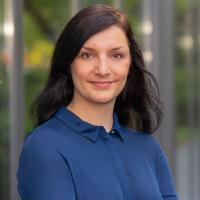A Self-Help App for Syrian Refugees With Posttraumatic Stress (Sanadak): Randomized Controlled Trial
Abstract
Background:
Syrian refugees residing in Germany often develop posttraumatic stress as a result of the Syrian civil war, their escape, and postmigration stressors. At the same time, there is a lack of adequate treatment options. The smartphone-based app Sanadak was developed to provide cognitive behavioral therapy–based self-help in the Arabic language for Syrian refugees with posttraumatic stress.
Objective:
The aim of this study was to evaluate the effectiveness and cost-effectiveness of the app.
Methods:
In a randomized controlled trial, eligible individuals were randomly allocated to the intervention group (IG; app use) or control group (CG; psychoeducational reading material). Data were collected during structured face-to-face interviews at 3 assessments (preintervention/baseline, postintervention/after 4 weeks, follow-up/after 4 months). Using adjusted mixed-effects linear regression models, changes in posttraumatic stress and secondary outcomes were investigated as intention-to-treat (ITT) and per-protocol (PP) analysis. Cost-effectiveness was evaluated based on adjusted mean total costs, quality-adjusted life years (QALYs), and cost-effectiveness acceptability curves using the net benefit approach.
Results:
Of 170 screened individuals (aged 18 to 65 years), 133 were eligible and randomized to the IG (n=65) and CG (n=68). Although there was a pre-post reduction in posttraumatic stress, ITT showed no significant differences between the IG and CG after 4 weeks (Posttraumatic Diagnostic Scale for DSM-5, Diff –0.90, 95% CI –0.24 to 0.47; P=.52) and after 4 months (Diff –0.39, 95% CI –3.24 to 2.46; P=.79). The same was true for PP. Regarding secondary outcomes, ITT indicated a treatment effect for self-stigma: after 4 weeks (Self-Stigma of Mental Illness Scale/SSMIS–stereotype agreement: d=0.86, 95% CI 0.46 to 1.25; stereotype application: d=0.60, 95% CI 0.22 to 0.99) and after 4 months (d=0.52, 95% CI 0.12 to 0.92; d=0.50, 95% CI 0.10 to 0.90), the IG showed significantly lower values in self-stigma than the CG. ITT showed no significant group differences in total costs and QALYs. The probability of cost-effectiveness was 81% for a willingness-to-pay of €0 per additional QALY but decreased with increasing willingness-to-pay.
Conclusions:
Sanadak was not more effective in reducing mild to moderate posttraumatic stress in Syrian refugees than the control condition nor was it likely to be cost-effective. Therefore, Sanadak is not suitable as a standalone treatment. However, as the app usability was very good, no harms detected, and stigma significantly reduced, Sanadak has potential as a bridging aid within a stepped and collaborative care approach.
Authors

Susanne Röhr, PhD
Clinical Psychologist, Epidemiology & Public Health Researcher

